That’s how long I meditated at the Panditarama Vipassana Meditation Center in Lumbini, Nepal. Together with a friend with whom I had previously attended a Vipassana silent retreat in the Netherlands, we traveled to Nepal in January 2018. This is an account of my experience at the center, the meditation, and what it yielded.
I had attended two ten-day retreats with Guus Went and Jerome Stoel. The last retreat had inspired us enough to venture to Nepal for a longer period. The evening before we headed to the center, we met a Belgian man in the nearby village who happened to start the next day as well, and the three of us discussed practical matters and expressed our slight nervousness. The following day, we walked to the center, located in Lumbini Garden, an area full of Buddhist temples, with the highlight being the birthplace of Buddha. An important place for Buddhists, indeed. Upon arriving at the center, we were welcomed by the nun and monk who lead the center. The nun, Sayalay Baddha Manika, is a petite Burmese woman in her sixties. The monk, Sayadaw U Vivekananda, is a originally German man of a similar age with a slender build. We were assigned our rooms; I stayed in a triplet, a room for three people, while my friend stayed in the dormitory.
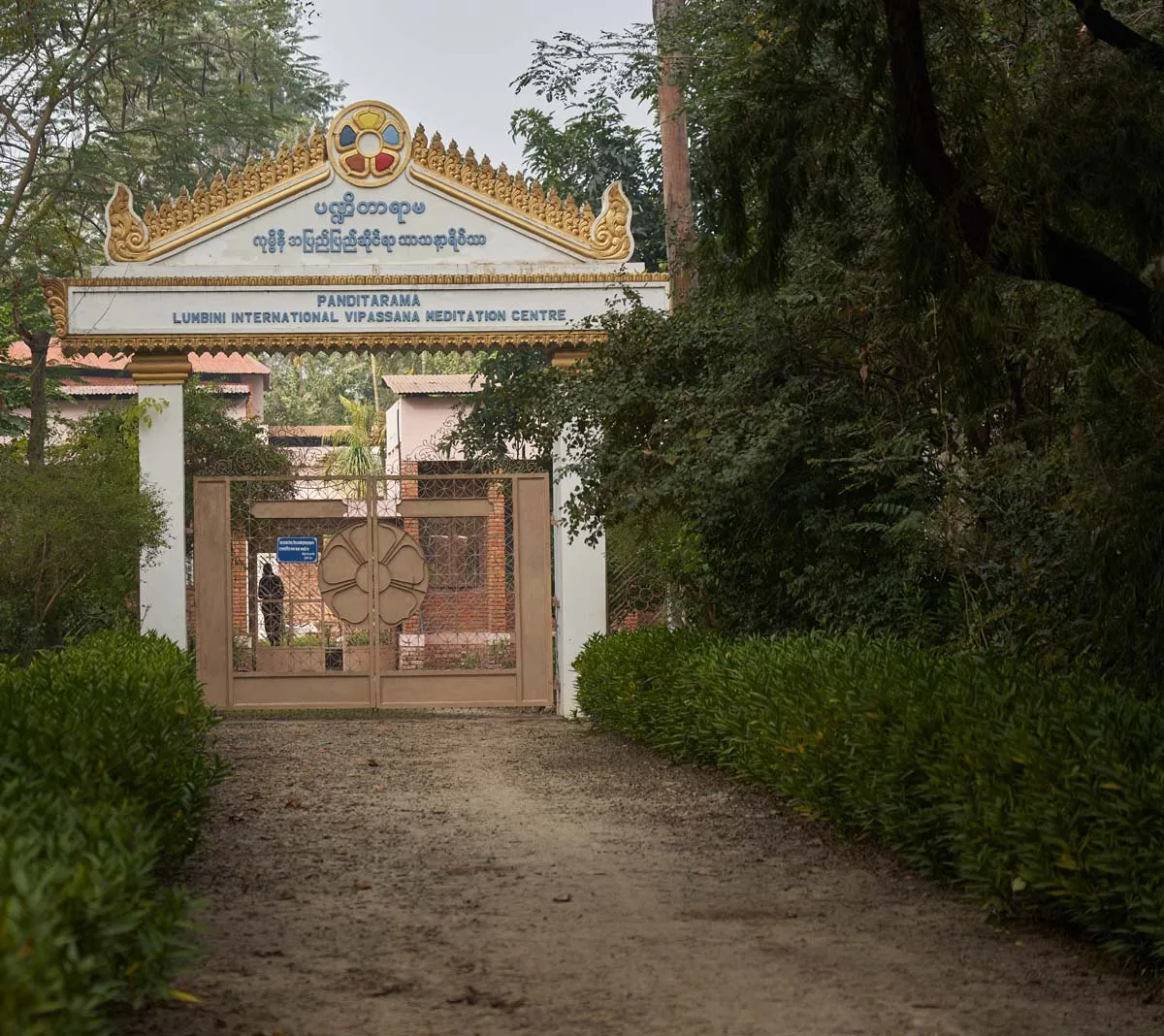 The gate into Panditarama, the meditation centre
The gate into Panditarama, the meditation centre
The Environment
The center consists of a large meditation hall, a dining hall, several triplets situated along a wide path, and further back, the Kuti’s, small houses for meditators. There is also a large garden where workers are constantly maintaining it. Initially, I found the triplet to be Spartan, but what do you expect when you want to live as a monk for sixty days? A room with a bed in each corner and a toilet plus shower. All made of aluminum and stone. And no heating or hot water, which, by the way, is not common in Nepal at all. In hindsight, it sounds foolish, but I had seriously misjudged the temperature in Nepal in January. It was especially cold in the morning, and I was not prepared for that.
The first few days were quite nerve-wracking. But everything quickly becomes routine once you find your place in the meditation hall. We undertook an intensive insight meditation retreat following the teachings of Buddha. This meant strictly observing Sila, the eight precepts for monks. The most important ones were not speaking, not eating after noon, and not killing, which also meant not killing mosquitoes, which were quite present when it got warmer. And meditating for a minimum of 15 hours a day, alternating between walking and sitting meditation. We were already accustomed to this from the retreats in the Netherlands. The walking meditation went well, but sitting was one big ordeal from the first day. Aches in the back, heat, and pain in the right buttock, you name it. It got better over the days, but I always experienced some physical pain. Interestingly, this pain actually helped with meditation; I could use it as an object of meditation.
 The room I stayed in the first days with the Kuti (cabin) I went to later
The room I stayed in the first days with the Kuti (cabin) I went to later
Dhamma Talks
On Mondays, Wednesdays, and Fridays, Sayadaw gave a Dhamma talk about the practice and Buddhism. It took some getting used to his way of speaking, but the topics provided me with a lot of insight into the details of the practice and Buddhism. The formal nature was especially noticeable here: bowing three times to the teacher, singing expressions of respect, bowing again. The same at the end. And when entering or leaving the Dhamma hall, you bow three times to the Buddha statue. For yourself, as a sign of respect. This benefited my practice. After the talk, there was metta-chanting: singing out of loving-kindness towards your surroundings. You wish that your parents, family, friends, and the rest of the world may be free from enmity and danger, from physical and mental suffering, and that they may take care of their own happiness. I found this to be a beautiful experience; it filled me with warmth and love.
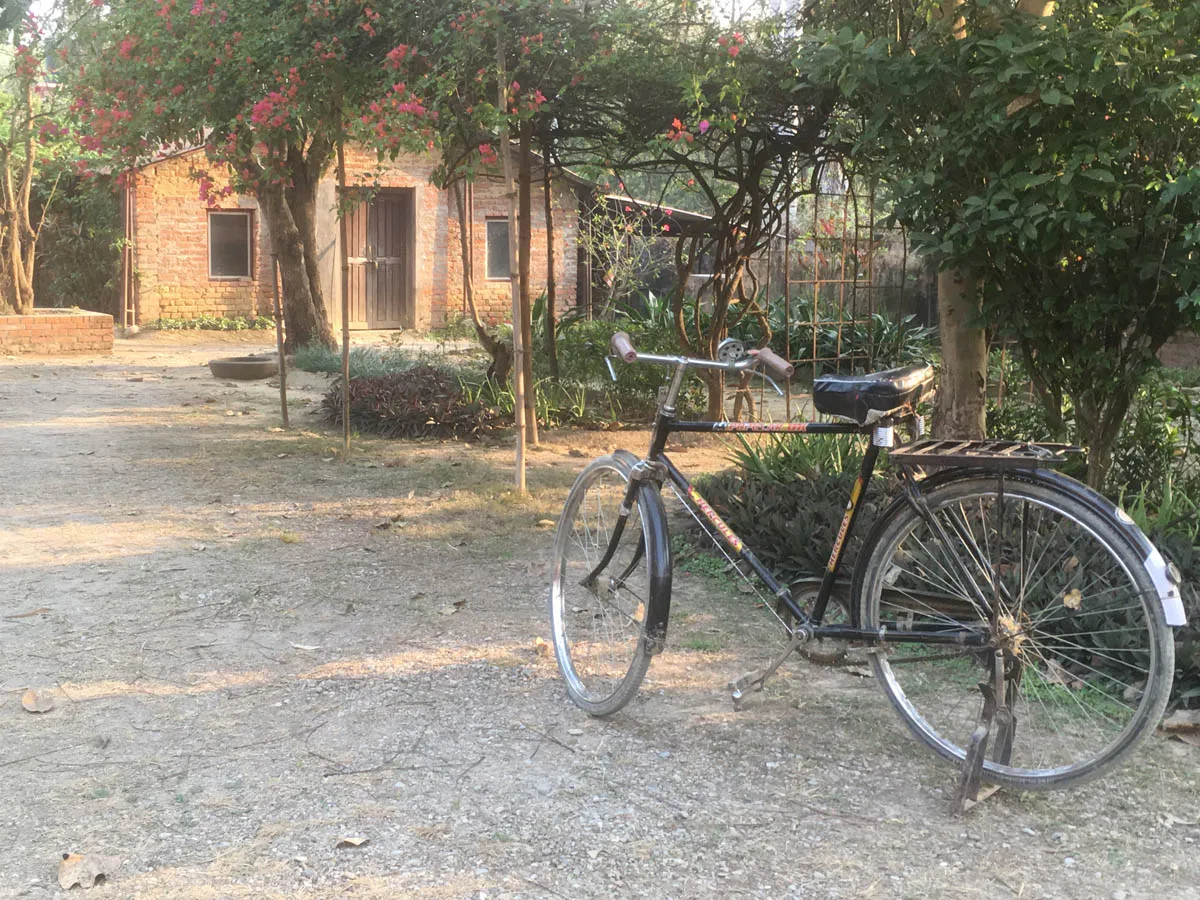 Inside the meditation centre, the bicycle of one of the gardeners
Inside the meditation centre, the bicycle of one of the gardeners
Every day, except on Saturdays, we had a personal interview, alternating with Sayadaw or Sayalay. The monk (Sayadaw) was incredibly supportive, and I often emerged from these interviews feeling completely enlightened. Sayalay could also be encouraging, but she could also be very straightforward and blunt, which my delicate soul had trouble handling. I sometimes sat on a bench for a few hours feeling depressed, initially angry at her, but soon enough, angry at myself. Wanting to quit the retreat, having no desire to see any more of life. Eventually, this always turned into understanding. And I also realized that she always did this out of loving-kindness and compassion. What was beautiful about this was that I learned some important things about myself. It ultimately had a positive effect on my practice.
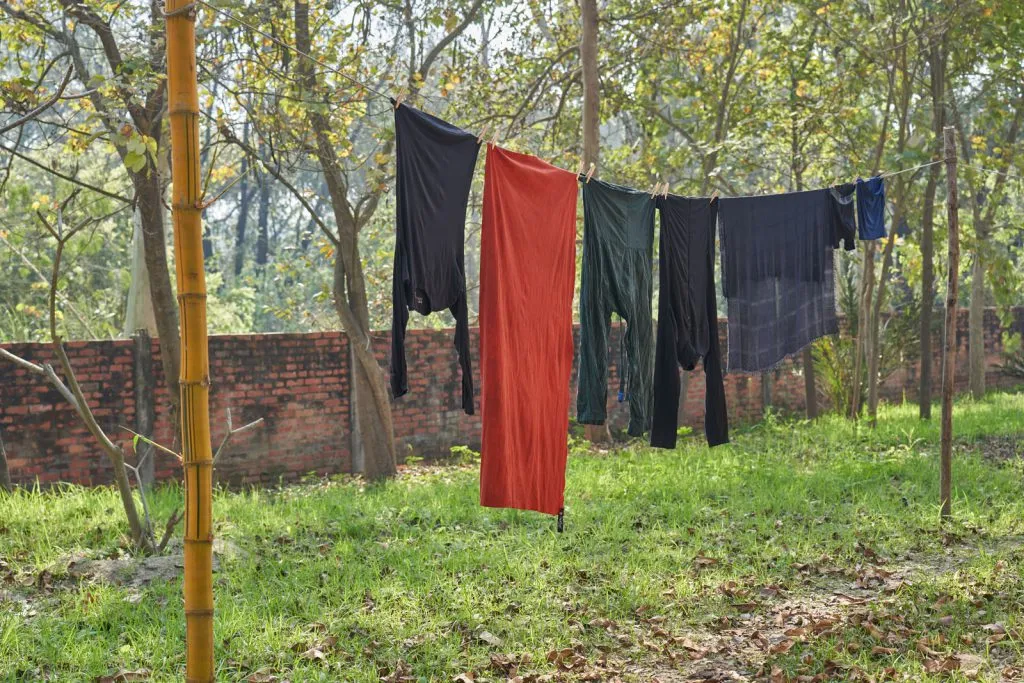 The smell of freshly hand-washed laundry was one of the little things that brought me true joy
The smell of freshly hand-washed laundry was one of the little things that brought me true joy
Prejudices
You meditate from the moment you wake up until you go to sleep. This includes eating, washing, moving, etc. And these little things could make me immensely happy. Tasting a small piece of cake. The smell of laundry on the clothesline. Even a cold shower brought me immense joy on several occasions, to the point where I had to be careful not to burst out laughing with pleasure. Additionally, I was not alone, as there were twenty to even forty other meditators, about whom I had judgments based on their way of walking, eating, or even their clothing. Totally unfounded, of course. But these judgments persisted. For example, my envy suddenly turned into respect when I cleaned the Dhamma hall with one of the meditators, and he thanked me very kindly. I saw so much kindness in his face that I immediately had respect for him. Sounds also played a significant role in my experience. I could hear chanting from the surrounding temples, the playful sounds of young monks, and the sounds of gongs. From the surrounding villages came Hindu music and the prayers of a few mosques. I incorporated these sounds into my meditation practice. I found the food to be healthy and varied. The gong for breakfast rang at six in the morning. In line at the buffet, I always had muesli with yogurt and rice pudding. At 11:00, we had lunch with variations on the Dhal Bhat theme. Lentil soup with rice and vegetables. Occasionally eggs, but primarily lacto-ovo-vegetarian. One of the precepts is not to consume food after noon. So lunch was the last meal of the day. My body had to get used to this in the first few days, but it was no problem later on.
On day 42, I moved out of the triplet and got a kuti, a meditation house for one person. The house was situated by a beautiful pond along with five other huts. A few days later, a monk from Burma, Sayadaw Paňňathami, came to lead a twelve-day retreat. He was accompanied by over twenty yogis from Kathmandu, and suddenly, it became much busier. Moreover, the Dhamma talks were now in Burmese, translated into Nepali. Fortunately, the next day, we received the translation from Sayadaw U Vivekananda in English. The center suddenly buzzed with life, and it had a different atmosphere. It took some getting used to in the beginning, and meeting U Paňňathami and receiving an interview from him was a unique experience.
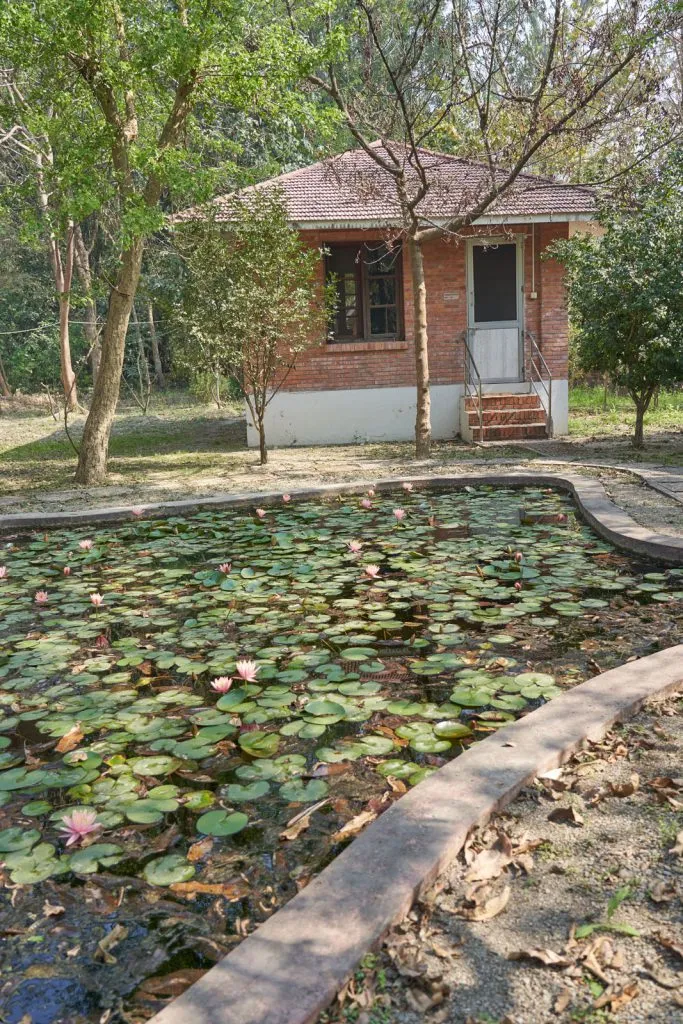 The Kuti (cabin) I stayed in
The Kuti (cabin) I stayed in
The Lessons
So the days crawled by because a day can feel very long. Eighteen hours without any form of distraction or rest. The practice is continuous. Your mindfulness should have as few gaps as possible; you are constantly in the present moment. And these moments accumulate, second after second, minute after minute, hour after hour, day after day. It was often challenging for my mind to do this. It requires extraordinary effort. And I didn’t always have that effort. Then, the mind would start fantasizing, recalling memories, making plans, and so on. Sometimes enjoyable, sometimes not. Through the practice, I realized how impermanent life is. I felt sorrow so intense that it was indistinguishable from real grief. I now realize that we all get sick and die. I understand that family and friends are worth so much more than I ever thought because it is finite. Everything is finite. So I made a commitment to spend more time with them. Real time, daring to speak about what really matters in life.
Furthermore, I gained insights into myself, or ego. That I spend more time in an imaginary future than in the present; that I easily give up when things get difficult, that I let others’ opinions shape my life for the most part. I realize that changing this takes time, maybe it never changes. But awareness is the first step.
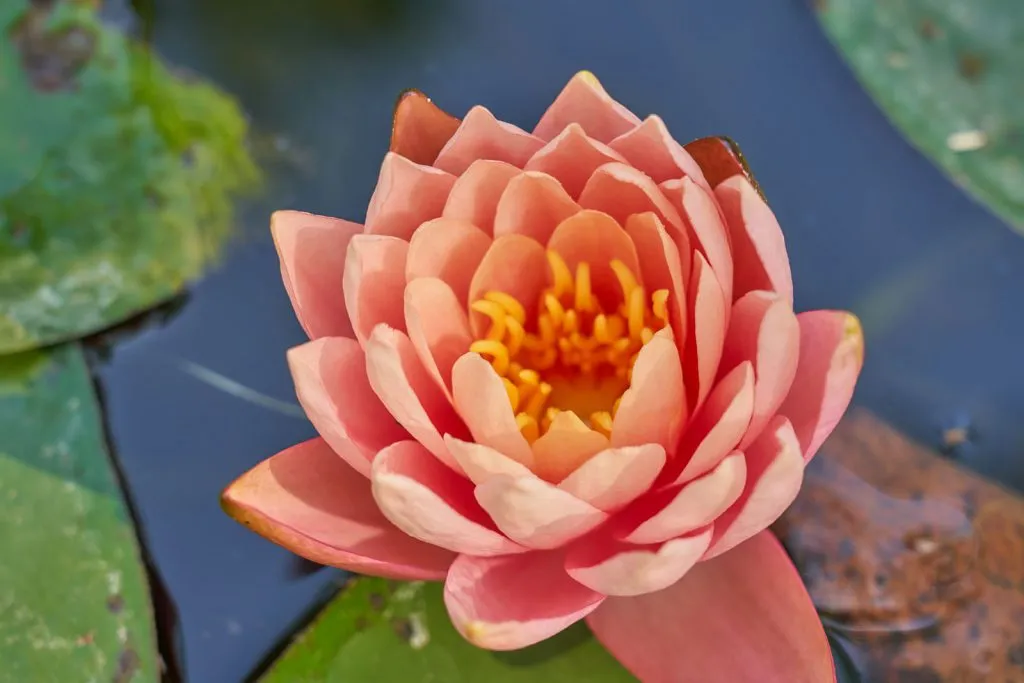 A lotus flower at the pond in front of the Kuti (cabin) I stayed in
A lotus flower at the pond in front of the Kuti (cabin) I stayed in
The Beautiful Moments
In addition to these insights, there were also many beautiful moments. I often had tears of pure happiness or joy in my eyes. I sometimes stayed in a state of loving-kindness for a long time. I made progress in the practice. Towards the end, there was so much concentration, and the mind was so sharp that it could perceive dozens of events per second. Seeing all these events or objects disappear so quickly gives an unreal feeling of emptiness. These experiences have convinced me to continue following the path I embarked on. I have experienced that it can liberate one from suffering. That my mind was free from impurities such as hatred and greed, and that it provides immeasurable inner peace.
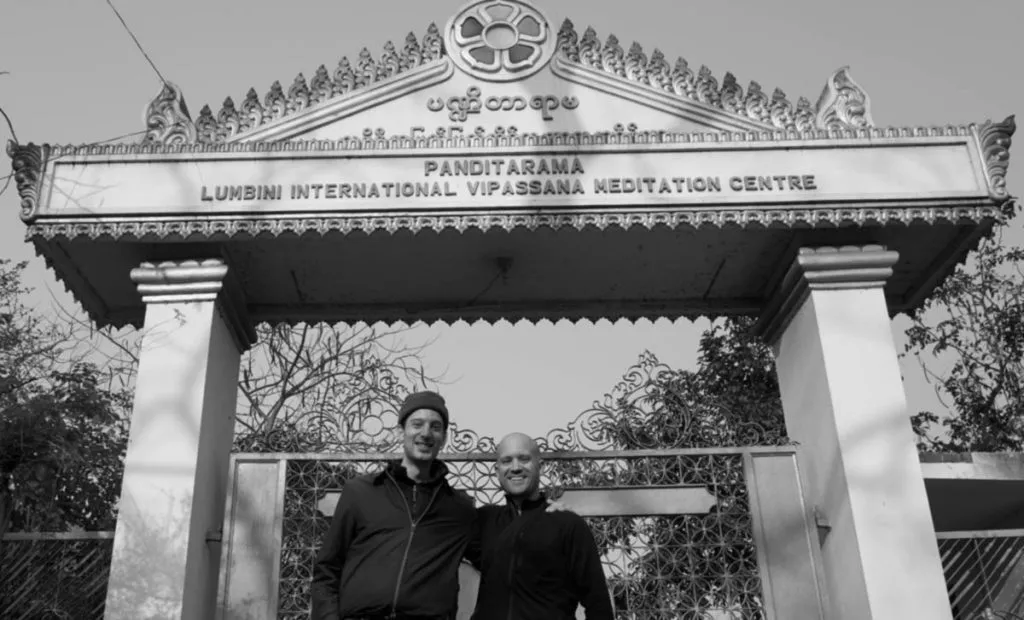 The day we stepped outside the gates again
The day we stepped outside the gates again
Looking Back
It has been half a year since I completed the retreat. When I returned to the Netherlands, nothing had changed. Everyone was still rushing from one place to another. I feel like I’m in a pressure cooker where we have lost sight of each other. And I allowed myself to be carried away to some extent. However, significant changes have occurred in my life. Very practical matters, such as living more frugally and finding work that brings me much more satisfaction. But also changes at the level of belief and purpose. Am I a Buddhist now? I don’t think so, but I try to live by the five precepts (Sila) that Buddhists adhere to.
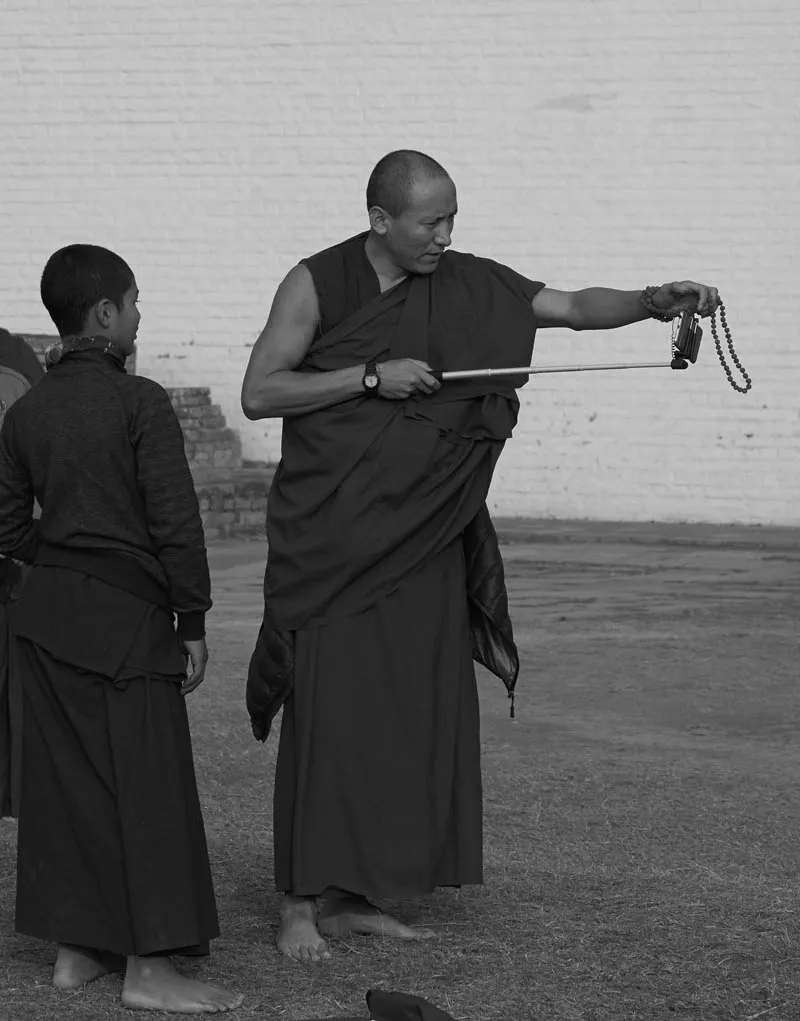 Even monks take selfies
Even monks take selfies